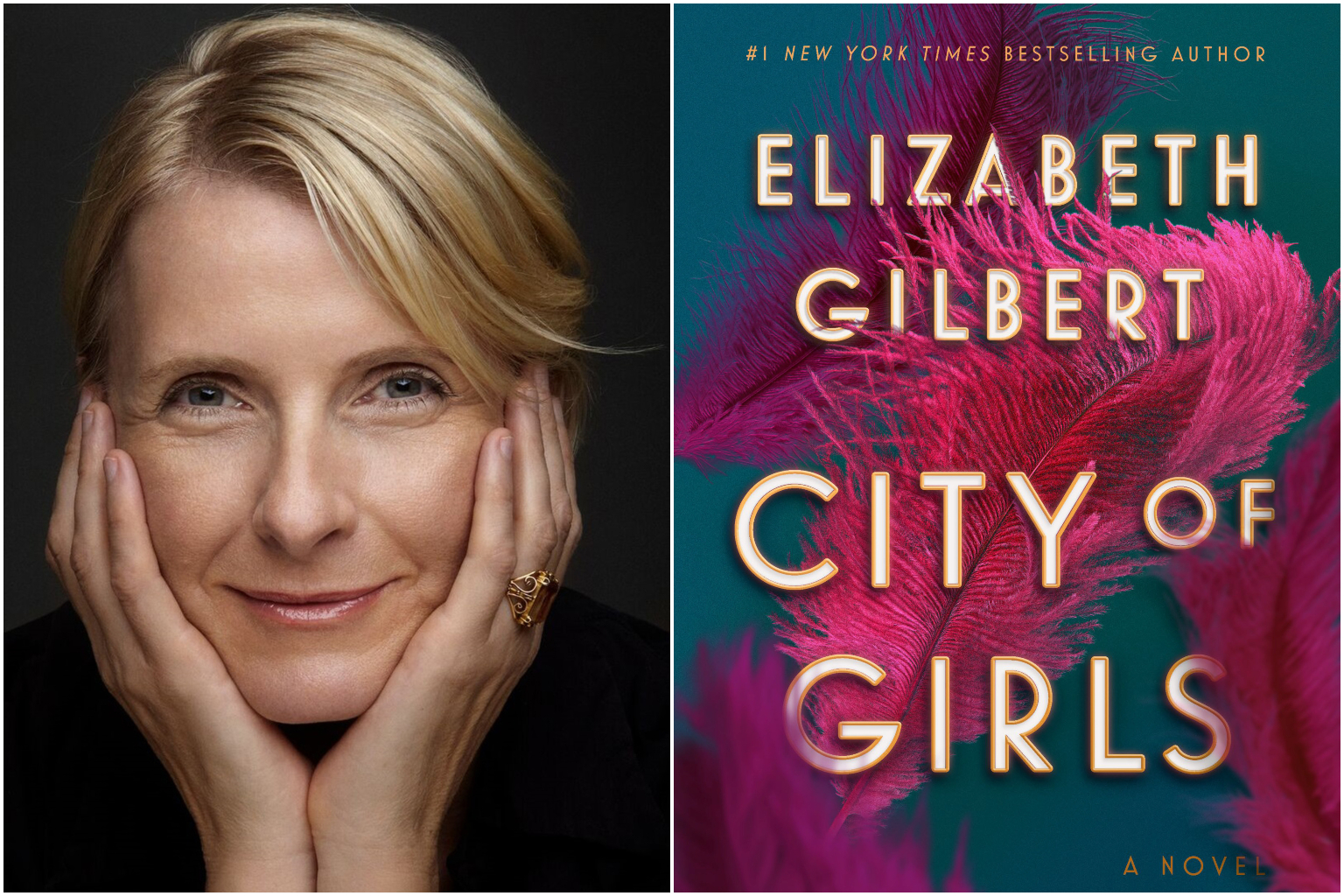Eat, Pray, Love author Elizabeth Gilbert battles grief to produce book on 1940s showgirls
Sign up now: Get ST's newsletters delivered to your inbox

City Of Girls, American writer Elizabeth Gilbert's third novel, is a wild, glamorous look at showgirls in 1940s New York.
PHOTOS: TIMOTHY GREENFIELD-SANDERS, RIVERHEAD BOOKS
Follow topic:
Thirteen years on from her wildly popular memoir Eat, Pray, Love (2006), American writer Elizabeth Gilbert has closed the chapter on not one, but two life-changing relationships. In the midst of immense grief, she found solace in producing a novel full of joy.
City Of Girls, her third novel, is a wild, glamorous look at showgirls in 1940s New York.
It is not the novel one would expect somebody who had just lost a loved one to cancer to write. Gilbert certainly did not think so.
She took 18 months off working on the book to care for her partner, Syrian-born American musician Rayya Elias, who died last year.
Writing the book saved her during her grief last year, says the 49-year-old in an e-mail interview. "At that time, I thought I would never return to the novel. I couldn't imagine ever caring about it again.
"But shortly after Rayya's death, some deep inner voice told me that the best and most healing thing I could do for my emotional health, in this time of grief, was to... write exactly the frothy, buzzy, upbeat, entertaining novel I originally planned."
Gilbert had been a successful freelance writer for many years, with accolades such as a Pushcart Prize win and a National Book Award nomination, but Eat, Pray, Love made her a publishing phenomenon.
It chronicles her travels in Italy, India and Indonesia in the wake of a painful divorce and how she found love again with "Felipe", based on Brazilian businessman Jose Nunes, whom she later married.
The book has sold more than 12 million copies and was made into a film in 2010 starring Julia Roberts and Javier Bardem. It spurred so many people, mostly women, to go on their own journeys of self-discovery that these spawned a 2016 anthology, Eat Pray Love Made Me Do It. But it has also drawn criticism for its self-centred narrative and for fuelling the "enlightenment tourism" industry.
Gilbert's fans were shocked when she announced in 2016 that she and Nunes were separating. Two months later, she revealed that she was in love with Elias, her best friend of more than 15 years. She had this epiphany when Elias was diagnosed with incurable pancreatic and liver cancer.
"Rayya isn't in this book," notes Gilbert of City Of Girls. "It felt important to me - life-preserving, actually - to write about anything but her. Someday I will write about her, I am sure. But not now."
Gilbert, who is now in a relationship with British photographer Simon MacArthur, had for years contemplated a novel about "promiscuous girls whose lives are not destroyed by their sexual activities" - the Anna Kareninas and Emma Bovaries of the world who do not end up flinging themselves under trains or poisoned.
"I wanted to take the cliched old story of 'the ruined woman' and turn it around - to write a novel about a sort of female who I think is far more common in the real world, but scarcely ever mentioned in classical literature, which is the sensual, interesting and resilient woman."
Gilbert stumbled upon an out-of-print book from the 1940s, a collection of profiles about famous stage actresses. It inspired her to set her novel in the New York theatre world of that era.
The book is a coming-of-age tale recounted by Vivian, a dissolute young woman from a wealthy background who flunks out of college and is packed off to New York, where she works as a seamstress at her aunt's crumbling theatre, the Lily Playhouse.
Gilbert spent five years researching the book, for which she hired a historian to walk her through Times Square, talked to women in their 90s and even 100s who had been showgirls, dancers and actresses and studied papers at the New York Public Library's Theatre History Wing. She learnt of the historical existence of "lavender marriage", marriages of convenience between a man and a woman where at least one of the parties was gay.
Unlike Vivian, she has no skill at sewing, but her mother, grandmother and maternal aunts were all seamstresses and she used what she learnt from them to make Vivian's craft credible.
As the showgirls of the Lily Playhouse take Vivian under their wing and introduce her to New York's nightlife, she encounters both the sexual freedom and the sexism of the era.
Gilbert says she is a supporter of the #MeToo movement against sexual harassment, but decided not to let it filter into the book. "I could not have my female characters be prematurely 'woke'. The ideas and beliefs of the #MeToo movement simply did not exist back then - or, if they did, would have existed in only very rarified academic settings, and certainly not the dressing rooms of uneducated showgirls.
"This doesn't mean that my characters don't slowly begin to realise the hypocrisy and injustices and double standards between men and women. But the realisations had to be both slow and shallow, in the case of this novel, in order to remain believable."
She admits that she herself has never been able to walk the narrow path of the respectable woman. "Now I don't even try. There are people who don't approve. But as Vivian says in my novel, 'At some point, a woman just gets tired of being ashamed all the time. Then she can finally become who she truly is.'"

